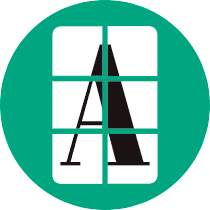Reading time: 8 minutes
Last fall Chris Stapleton appeared in a Sunday morning interview on NBC with Willie Geist. In a moment reflecting on the “how” of his music making, Chris pointed to a chair he’s used as he’s recorded all of his albums and said, “It’s home.”

We get sentimental about objects for that “home” feeling among other reasons, making it difficult to let go sometimes. These are the artifacts of our lives! Today, we’re sharing our green-yellow-red light approach to reevaluating your sentimental collections.
But, Reader, beware! If you are waiting for us to say, “Just take a picture, and let it go,” this is not the article for you. In this digital age, we accumulate photos as fast as dishes in the kitchen waiting to be washed. Each photo you take and let slip 100s and 1000s back in your camera roll, even if filed into a folder, is a missed opportunity. You could have captured what’s so meaningful about it while the details were fresh. You could have shared it with someone to connect over a shared memory. So, please, take the photo, we agree, but in the next moment or same day, Artifct that.
Okay, now on with today’s article!
________________
Letting Go Can Be Really Hard. Full stop.
When it comes to letting go of objects of sentimental value, some of us manage better than others. Some of us do not even consider ourselves sentimental and regularly “trim the fat.” The rest of us need all the help we can get, especially those of us who stubbornly maintain all that 'stuff' is not our problem, adopting a "Someone else can get rid of it once I'm gone," mentality.
Our reasons and motivations for deciding to let go of items vary:
-
-
- You’re downsizing and truly can’t keep it all.
- You’re mindful that you have a lot of stuff and do not want to burden your family someday with figuring out what to do with it all.
- You’re going through a decluttering process, because it’s beginning to feel like your walls are closing in on you. Psst ... A real or pretend household move can be a very effective motivator to declutter – less to pack and less to pay to move, too!
As we set out to learn existing strategies for letting go of sentimental items, we canvassed the literature, decluttering blogs and videos, and more than a dozen books on the subjects. While the examples and stories differed, along with the viewpoints (scientific, minimalist, Christian, you name it!), it felt like there wasn’t much separating one approach from another. We distilled our learnings into a green-yellow-red light process for you to consider, “What do I want to do with this ‘thing?’”
First, Why DO People Keep Sentimental Items?
The answer to this question is especially important for all of us with someone in our life who we think is particularly sentimental, and we just can’t relate. Some of the most common reasons we found for people keeping items of emotional value that you should keep in mind include:
-
-
- The item was important to someone else who you loved or respected.
- It makes you happy to have it, usually because of a memory it evokes.
- You’ve had it a long time and it would feel strange to get rid of it. This is related to a concept called the “endowment effect.” If we own it, it has more value.
- It’s the “last” of something or otherwise rare, or at least you think it is. This could also lead to a slippery slope of expectation that it has monetary value, too, today or “someday.”
- Emotional security – knowing it’s there makes you feel better.
- Just because. Yes, that’s it. Let’s call this, “It’s in the eye of the beholder.”
Letting Go of Sentimental Items: Green-Yellow-Red Light
If you have spent time with an elementary school aged child during the last decade, you may have heard of this green-yellow-red approach to teaching kids about the spectrum of foods and their value to our bodies. Green foods are “go foods,” and you should enjoy them every day as you wish because they are so good for you. Yellow foods are “whoa foods,” and should be enjoyed in moderation. Red foods are those for which you should stop before putting in your mouth and consider a better option. They are not good for your body.
The beauty of this framework is its dual simplicity and flexibility. Today we’re applying a green-yellow-red light framework to help you to parse through your belongings and just maybe let go of a few.
It’s important to emphasize that systems like these must be adapted to personal starting points and circumstances. Hoarding disorder, grief, and other situations may require different approaches, ranging from professional support to grace and space.
Green items: Keep, enjoy, display. Clearly this stuff matters to you! This might be the stuff you re-clutter with after you clear out the rest.
Yellow items: Reconsider. Maybe there’s a better home or opportunity to repurpose some of these items.
Red items: Halt: declutter! Red light items often have an overwhelming number of items in the same category or have had no use or value to you for years, making them ripe for thinning out over time. Remember, it does not have to be all at once!
Here are illustrative examples from each category to help you prioritize as you let go of sentimental items.
GREEN LIGHT – Give yourself a pass.
-
-
- It absolutely adds value to your life, brings you joy or peace, or some other benefit. You don’t have to justify this feeling. (Remember our recent ARTIcles story, “We all deserve a Purple Bin!”) You’ll know it reflexively when you look at the item. This is a category of items that may have already been pared back, for example, if you kept only a few items that belonged to your spouse who passed.
-
-
- You use or display & enjoy it and have no need to replace or change.
-
-
- It is financially valuable, too. Do not pinch pennies here. It’s valuable and you are going to keep it because it’s doing no harm, and you would only get rid of it if you sold it. (Check out our ARTIcles story, From Rare Art to Family Heirlooms: Tips From a Master as You Consider Selling Your 'Stuff.') When you Artifct it, be sure to attach the receipt, appraisal, and or certificate of authenticity in the ‘Documentation’ section and as many details as possible, potentially including how and where you got it (provenance), dimensions, weight, and any signatures or maker’s mark(s). Bonus: Use Artifcts’ “What’s it worth?” button if you are curious about the item’s current market valuation.
-
-
- If a family vote were taken, the majority would say, "Keep!” We have this broken pair of Rudolph glasses. I wanted to buy a new pair and was strongly vetoed. These glasses have been with us a long time, and my family found a new way to use them in their broken state.
YELLOW LIGHT – It might be time to go.
-
-
- Books. You might be surprised to reread “favorites” of yours only to discover they are favorites no longer. Your tastes shift. Books are a good category of objects to pause on and really consider whether you need each one. I’ll never get rid of my copy of Rooftops of Tehran. Even if I don’t love it one day, I remember the impact it had on me when I first read it. It stays. But recently I did reread some “critically acclaimed” books I remember enjoying and have moved with me several times, but they didn’t make the cut this time. I donated them.
-
-
- Battletested and/or antique kitchenware. How much of Grandma’s old cookware do you need to keep to remember what an amazing cook she was or how much you loved to cook with her or the smell of her bread in the oven? And if you are actually using it, consider if it is still safe to use. Can you reduce what you’ve kept to a few representative pieces? Maybe even retire some to become fun décor.
-
-
- Special textiles. Table linens, children's clothing and costumes, loved blankets, this is another area that’s easy to accumulate and squish just a bit more into that shelf or bin. And being practical, too, it’s easier to quickly try and give it a pass. If it’s all getting used, well, then that makes sense, unless of course you’re running out of space. Plus, linens tend to age without you truly SEEING the signs of age (stains, yellowing, fraying edges …). Use season changes to reconsider and maybe even “treat” yourself to something new to replace some you are letting go of.
RED LIGHT – Some of these items need to go.
-
-
- Boxes and boxes of items from a loved one who has passed. It’s taking up space somewhere, and to what end? If you're ready, pick out only those items that truly resonate with you. Consider who else could want it and benefit from the rest or open it up, video it, and send to family to give them a chance to make a claim.
-
-
- Relics of a former career, student or professional. Do you have college notebooks and textbooks from decades ago. Why? What about awards and mementos? Others are very unlikely to really understand what if any of this matters either if you haven’t told them the stories (or better yet, Artifcted them.) I was really proud of an econometric study I did in graduate school in large part because of the note the professor wrote on the final copy. I don’t know compelled me to keep the physical copy for decades, but I can tell you now that it’s Artifcted, I finally recycled it.
-
-
- Kid clutter. This is the artwork, awards, presents and so much more that multiplies like bunny rabbits inside closets, under beds, and in what was once a previously (momentarily?) organized and functional system of bins. It is absolutely fair game to put this category into a regular decluttering rotation with your child(ren). Why? It is especially vulnerable to you forgetting what it was and why you and your kids kept it anyway because of the sheer volume. Be careful in this category not to go overboard. Consider our learnings shared in, “Before You Thin Out That Stuffed Animal Collection, Consider What Scientists Have to Say.”
A Parting Story and Message to Consider
When our co-founder Ellen Goodwin (@egoody) traveled to Arizona to Artifct with her 97-year-old great aunt, what stood out were the things her aunt had chosen to keep as she came to the end of her lifetime and the stories they told. Having downsized to so very little, chief among the items her great aunt wanted Ellen to see were a pair of goggles, a brochure, and a testing piece she used to become certified to weld airplanes during WWII. Check out #MurielsStories.
What matters to us all, what TRULY matters, shifts over time. Do not feel pressured to move too fast to declutter and/or downsize unless life circumstances give you no real choice in the matter. Even then, please remember to take a moment to smell the roses and remember the value of what you have and, sometimes, the emotional and practical (less to dust!) value of letting go.
###
© 2024 Artifcts, Inc. All Rights Reserved.













 The first four days of our 12 Days of Artifcts challenge. Objects with stories, your stories!
The first four days of our 12 Days of Artifcts challenge. Objects with stories, your stories!



